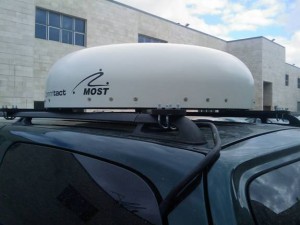Archive for the ‘Smart Grid’ Category
Monday, April 2nd, 2012
This summarizes a selection of applications for the Experimental Radio Service received by the FCC during January, February, and March 2012. These are related to radar, Amateur Radio, spread spectrum, white space, spacecraft telemetry, propagation testing, satellites, smart grid, femtocells, machine-to-machine communications, ad hoc networks, 4G backhaul, electronic warfare, and robotics. The descriptions are listed in order of the lowest frequency found in the application.
(more…)
Posted in 3G, 3GPP, 4G, Ad-hoc Networks, Amateur Radio, Antennas, Automotive, Aviation, Backhaul, Bluetooth, Broadband Access, Electronic Warfare, Experimental, Femtocells, High Frequency, IEEE 802, IMT-Advanced, Interferometry, LTE-Advanced, M2M, Millimeter-wave, Mobile Broadband, Propagation, Radar, Satellite, Sensors, Smart Grid, Space Communications, Telemetry, Uncategorized, White Space, Wi-Fi | No Comments »
Sunday, November 6th, 2011
This summarizes a selection from 173 applications for the Experimental Radio Service received by the FCC during August and September 2011. These are related to long-range low-frequency radar, amateur radio, shortwave data, wireless microphones, single-sideband, mine detection, millimeter-wave communications, signal intelligence, automotive radar, satellite feeder links, meteor-burst communications, aircraft telemetry, white space systems, border security radar, 3G and 4G applications, RFID, wind turbine testing, unmanned aerial vehicles, spacecraft telemetry and control, aircraft passenger broadband, and autonomous aircraft landing systems. The descriptions are sorted by the lowest frequency found in the application.
(more…)
Posted in 3G, 3GPP, 3GPP2, 4G, Amateur Radio, Antennas, Automotive, Aviation, Broadband, Cognitive Radio, Electronic Warfare, Experimental, FCC, GPS, High Frequency, IEEE 802, IMT-Advanced, Military, Millimeter-wave, Mobile Broadband, Mobile Services, Propagation, Radar, Radiolocation, RFID, Satellite, Smart Grid, Software Defined Radio, Space Communications, Spectrum, Telemetry, Terminals, UAS, UAV, UMTS, White Space, WiMAX | No Comments »
Thursday, September 30th, 2010
Even though Wi-Fi is standardized for the 2 – 5 GHz frequency range, there is non-standard modified Wi-Fi equipment available that operates in the US 902-928 MHz ISM band. Vendors take the core technology and change the frequency.
The demand is, in part, from the smart grid community, who like it for linking to smart meters because of the band’s greater range and lower obstruction losses. A problem, though, has been lack of interoperability. Each vendor has its own implementation, and smart grid customers don’t want to be tied to one vendor.
Today the IEEE Standards Association’s Standards Board approved a request by IEEE 802 Working Group 802.11 to start a project that will amend the 802.11 standard to include sub 1 GHz operation. This project, under new Task Group 802.11ah, does not include TV white space frequencies; that’s being handled under Task Group 802.11af.
The most important thing this amendment will do is establish standard RF channel widths and center frequencies. Because 802.11 is an international standard, non-US allocation schemes will be considered as well.
Posted in Ad-hoc Networks, IEEE 802, M2M, Smart Grid, Standardization, Unlicensed, Wi-Fi, Wireless | No Comments »
Wednesday, September 8th, 2010
This summarizes a selection of applications for the Experimental Radio Service received by the FCC during August 2010. These are related to radar, military communications, mesh networking, unmanned aerial vehicles, satellite services, biomedical telemetry, aircraft telemetry, safe-driving systems, geophysical sensors, electronic warfare, smart grid, and antenna testing.
- INOVA Geophysical Equipment Limited filed an application (with supporting exhibits) to test a proprietary mobile radio system in the 30-36 MHz and 150-174 MHz bands. The radio links would be used to control remote geophysical seismic recording equipment, which INOVA manufactures. At the end of testing, INOVA plans to put the radio equipment into production and lease it to customers.

- Fortress Technologies filed an application for experimental license to test several of its secure mesh-networking products developed for military applications. Several exhibits are included but they are not publicly available due to a confidentiality request. Operation is to be on 4.9425-4.9875 GHz.

(more…)
Posted in Ad-hoc Networks, Antennas, Aviation, DTV, Electronic Warfare, Experimental, Land Mobile, Location, Military, Millimeter-wave, Private Radio, Public Safety, Radar, Satellite, Smart Grid, Telemetry, Uncategorized, Unlicensed, Video, Wireless | No Comments »
Monday, March 22nd, 2010
This summarizes a selection of applications for the Experimental Radio Service received by the FCC during February 27 – March 14. These are related to smart grid, antennas, radar, military, satellite, data links, roaming services, maritime communications, WiMAX, network protocols, and UAVs.
- Sensus Spectrum filed an application (with supporting exhibit) for special temporary authority to test European Advanced Metering Infrastructure (AMI) equipment on 412-424 MHz.
- The University of Colorado filed an application (with supporting exhibit) for special temporary authority to test the feasibility of synthetic aperture radar in an end-fire configuration. This configuration will output short (50ns) bursts of approximately 10W at 500-530 MHz in order to construct an image of objects in an adjacent parking lot. This is an attempt to prove the feasibility of a new radar configuration for a proposal to NASA.
- Oceanit filed an application for special temporary authority for a Ku-band SATCOM transmission test with an experimental ground-based phased-array antenna. Operation is to be on 13.75-14.50 GHz.
- Northrop Grumman filed an application (with supporting exhibit) for special temporary authority to test an electronically-scanned-array radar system intended to act as part of a missile interceptor system to protect against rocket, artillery and mortar threats. Operation is to be on 16.2-17.3 GHz.
(more…)
Posted in Antennas, Aviation, Experimental, Military, Network Protocols, Radar, Satellite, Smart Grid, Telemetry, Video, WiMAX | No Comments »
Sunday, February 14th, 2010
This summarizes a selection of applications for the Experimental Radio Service received by the FCC during February 8-12: mobile satellite terminals, white space, smart grid, satellite infrastructure, submarine communications.
- Xtreme Hi-Tech files an application (with supporting exhibits) for experimental license to test a new type of mobile satellite antenna while it is mounted on an SUV. Operation it to be on 14.0-14.5 GHz in suburban Washington DC. Photos accompanying the filing show a Commtact mobile satellite terminal, which Xtreme Hi-Tech sells.

(more…)
Posted in Antennas, Experimental, Infrastructure, Military, Satellite, Smart Grid, White Space | No Comments »


